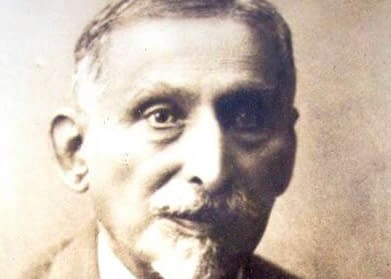The play on Ajjibai Banarase, one of the popular first generation Marathi persons to the UK, is soon to be showcased in different cities across Britain. Though Marathi people were one of the earliest Indian groups to migrate to the UK, unfortunately not much documentary material is available about them. Marathi students came to study in the UK from 1870s onward, however, active migration of Maharashtrians started around 1930s. Prominent amongst the first generation migrants were Dattatreya Tahmankar, Vitthal Banarase, Krishna Kanitkar and Ajjibai Banarase, who was popular for providing accommodation to visiting Indians at her Indian Boarding House.
Marathi migrants formed a vibrant part of literary, political and educational fabric of British society and were the leading lights of the community. Some Marathis like Shankar Joshi, Satish Desai, Sharad Dongre and recently Ms Jaee K Samant, have received Queen’s honours for their outstanding contributions. Rango Bapuji Gupte was one of the earliest writers of Marathi origin in Britain. He was sent to England in 1840 by Chhatrapati Pratapsingh of Satara. He went back to India to aide in Indian Rebellion of 1857. Ratanbai, written by Shevantibai Nikambe was the first work by a Marathi woman published in Britain in 1895. Suresh Vaidya, Tara Vanarase, Meena Prabhu, Asha Damle and Mukund Sonpatki have all published numerous works in later years. Hemant Kanitkar authored extensive Hindu literature still used by schools throughout the UK. He left a substantial part of his estate to SOAS supporting scholarships in Religious Studies. Krishnarao Shelvankar was a highly regarded journalist, correspondent for The Hindu in London from 1942-1968, and was also the president for Indian journalists Association.
Marathi was also one of the earliest Indian languages taught in the UK for the Indian Civil Service probationers proceeding to work in Bombay Presidency. It is interesting to note that the English-Marathi connection dates back to 1615 AD when Father Thomas Stevens, the first historically recorded Englishman to arrive in India in 1579, wrote the monumental Krista Purana in Marathi. Another Englishman Dr William Carey authored the first ever Marathi grammar printed in 1805. Major Thomas Candy, Superintendent at Poona Sanskrit College has substantially contributed to Marathi lexicographic work.
Marathi was taught at Haileybury College in 1820s, and much later at UCL, King’s College London, Oxford and Cambridge. At School of Oriental and African Studies (SOAS), Alfred Master and Ian Raeside rendered yeoman service to Marathi literature. Until 1880s, it was the British who taught the language except Hormandji Pestonji who taught Marathi and Gujarati at King’s College from 1865-1895. Between 1884 -1896, Marathi was taught at UCL by R.D. Sethna, an advocate at Bombay High Court, and Harischandra Chintaman, the political agent to Gaekwad Malhar Rao of Baroda in London.
In arts scene, Tabla player Keshav Sathe who came to the UK in 1956 made his name in Indian Jazz genre. He became part of Asian Music Circle, a pool of Indian musicians based in London and was said to have done recordings with the Beatles too. His son Anand Sathe is a gifted violinist and currently plays for Bloomsbury Chamber Orchestra. Arts groups like Ankur-Virangula are promoting unique Marathi arts like Powada story-telling, besides individual music and dance practitioners.
In politics, Lord Pratap Chitnis has been the only person of Marathi lineage to have served in the House of Lords. Peter G Pendse, Sadashiv Deshmukh and Madhav Patil have served as Mayors in London Boroughs while Baba Kulkarni and Sanjay Dighe served as Councillors. Mukund Nawathe was the first Asian to be elected to the branch council of John Lewis Partnership in 1954.
Sushil Rapatwar, President of Maharashtra Mandal London elected by an impressive majority for the second term few months ago, says it was an honour to read out the message given by Prime Minister David Cameron to the British Marathi community during the book release function of Shivaji the Real Hero at the House of Commons last year.
A petition was recently made to facilitate the public display of the Sword presented to HRH Prince of Wales in 1875 by Chhatrapati of Kolhapur- Raja Shivaji IV. For details visit https://www.change.org/p/the-rt-hon-the-earl-peel-dcvo-dl-lord-chamberlain-display-artefacts-that-radiate-indian-heritage-and-history
Thus the Marathi Diaspora in the UK has a rich legacy in Britain to be proud of and to take forward.
Photo courtesy: British Library, RD Sethna Scholarship Fund and file pictures.





